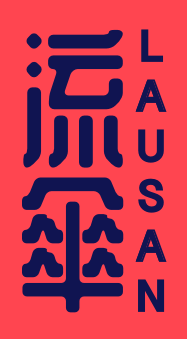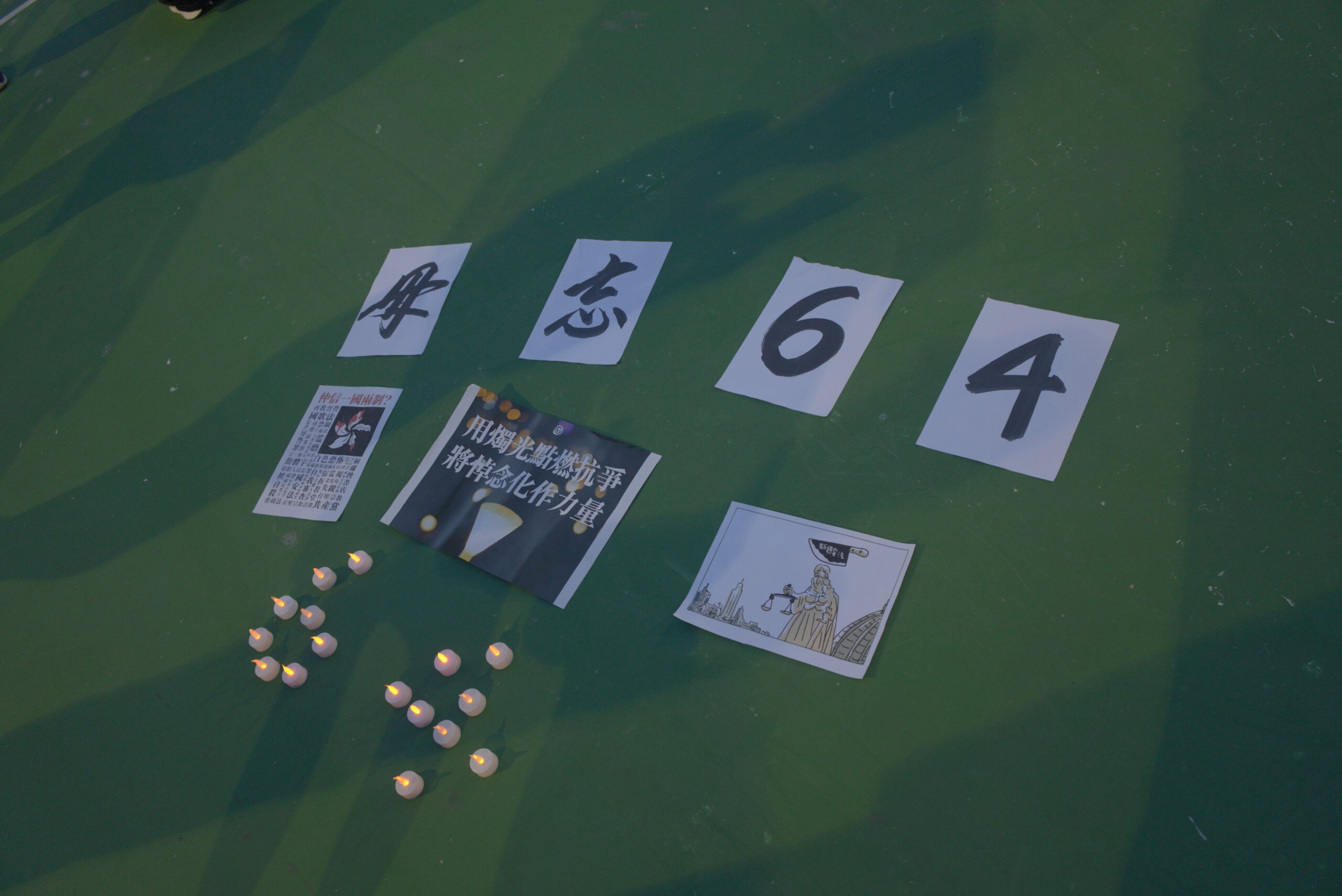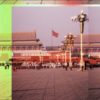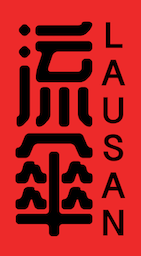Originally published in The Nation. Republished with permission.
Author’s preface: This essay explores how diaspora activists and US legislators alike have weaponized the legacy of Chinese mass movements, like the 1989 democracy movement, to fuel the myth of American democracy as a bulwark against illiberalism. Unfortunately, the dynamics identified in this essay can be seen in even sharper relief now. Since I wrote this article last June, Joe Biden signed an $858 billion defense bill into law at the end of 2022, with Pentagon officials and US lawmakers citing China as a civilizational threat. Bill after bill countering “Chinese authoritarianism” continues to pour through Congress with rare bipartisan efficiency. But the US is in no position to defend the values of democracy. Last week, Atlanta police arrested organizers of a solidarity fund supporting those unjustly incarcerated for protesting the Cop City development, echoing the Hong Kong government’s targeting of organizers of the 612 Humanitarian Relief Fund that supports political prisoners from the anti-Extradition Bill movement.
The persistent refusal among dissident communities to understand these events in relation to each other limits democratic alternatives to a world order increasingly shaped by US-China tensions. We must continue to challenge the use of social movements in China and its peripheries to reinforce the dangerous fiction that the key global struggle today is one between Western-led defenders of a democratic political order against the forces of “communism” seeking to subvert it. Such a perspective obscures the real conditions: uneven and discontinuous rivalry between two imperialist powers that nonetheless remain tightly economically interdependent, each peddling authoritarian measures of their own to varying degrees.
To clarify, I do not mean to suggest that the workers at Tiananmen in 1989 provide us with political solutions today. As Mia Wong wrote in her essay on Tiananmen, “Expecting answers from the departed is demanding too much of those, past and present, who died fighting for liberation.” The same goes for the surviving Tiananmen workers who have found other political paths today. Instead, the point of the essay is to encourage readers to recognize how those workers’ independent action can model a deeper understanding of the Chinese political system. Recovering the history of how Hongkongers once threatened a general strike in solidarity with slaughtered and arrested Chinese workers, who had nearly paralyzed Beijing’s productive capacities, better points us to a different practice of politics needed today.
On the other hand, Western militarism, “human rights” advocacy, and sanctions will not promote liberation for China’s toiling masses, who are only more proletarianized and precarious than ever before. The political strategies of these workers remain relevant, especially to make sense of what Sitong Bridge protestor Peng Lifa understood in part and the White Paper movement began to realize last year: pluralism and democracy must be grounded in independent mass action and organization. The left must help quicken this whenever possible, encouraging avenues for local and diaspora communities to understand for themselves the limits of liberal reformism, and that the Chinese state’s totalitarianism is intimately tied to a neoliberal, market-based order that implicates Western regimes as well.
Thus, we need transitional demands on a global scale that bridge everyday people’s immediate demands for autonomy and social welfare from the US to China to larger campaigns that empower mass democratic control over the means of production against market relations. Chinese workers also need to rediscover strategies and infrastructure for rebuilding revolutionary politics that links to industrial organizing, resilient enough against incursions by an ever-penetrating surveillance state and supported by allies living overseas. Such tasks are easier said than done. And as the workers of Tiananmen understood, no social transformation can emerge without safeguarding and restoring basic democratic norms. However, the struggle for democracy must be continually deepened, from the streets to the shop floor and beyond. A democratic politics of pluralism must not collapse into a “formless magma,” as Daniel Bensaïd once wrote, in which “the relations of ownership and exploitation would be no more than one image among others of the great social kaleidoscope.” Capital remains the force against which we must orient and unify our struggles; the aegis of any capitalist state institutions will not offer respite or hope.
On June 7, 1989, three days after Chinese soldiers massacred protesters in Beijing’s Tiananmen Square, Hongkongers were about to launch what would have been the city’s largest ever general strike. Throughout the 1980s, China’s market reforms had exposed deep contradictions in Chinese society, and students were flocking toward Western liberalism. The death of General Secretary Hu Yaobang, a supporter of economic reforms, led to weeks-long sit-ins in Tiananmen Square and in cities across the country. The Army cracked down and, after the June 4 slaughter, grieving Hongkongers called for mass action against China. But on the eve of the general strike, Szeto Wah, a pro-democracy leader in the Tiananmen solidarity movement in Hong Kong, called it off, having heard that militant demonstrators were planning to target Chinese financial institutions in the city. He feared that the protesters would go too far and that they would be uncontrollable. Tens of thousands of Hongkongers marched, but without the organized support of pro-democracy leaders and organizations.
This missed opportunity to build a mass movement that could energize workers from Beijing to Hong Kong against both the British and Chinese regimes has largely been forgotten, but it points toward Tiananmen’s contradictory legacies. Especially in the West, the Tiananmen movement serves as a symbol of dashed hopes for the expansion of civil rights in China. The massacre, as some scholars observe, helped give rise to a hard-line, punitive approach in the US Congress toward China. The dissident anti-Communist diaspora partnered with right-wing hawks, and over the years they made the Tiananmen tragedy part of a larger narrative promoting US containment policies. Initially, economic interdependence between the United States and China created challenges for this tendency to consolidate, but as the US-China rivalry grew, a robust anti-China lobby in the US gained influence.
But only one particular faction of the Tiananmen movement, that of the elite student leaders, provides the ideological framework for the US establishment’s strategy toward China. Many of the student protesters saw Western democracy—guaranteed by the institutions of the West—as the only antidote to Chinese authoritarianism. But to imagine a foreign policy grounded on genuine democracy, we can return to the more radical legacy of Tiananmen’s workers that many in the West have forgotten.
With China’s market reforms in the 1980s, students and other intellectuals began to look to Western ideas of human rights and democracy as solutions for the country’s political and economic ills. In public writings and at academic conferences, many dissidents argued that liberal reforms would be fundamentally incompatible with Chinese culture. The writer Liu Xiaobo estimated that China would need 300 years of Western colonialism to pull itself up. The students’ vision of democracy became increasingly associated with notions of human rights and free speech that were separated from mass political action. As Samuel Moyn argues, human rights discourse without mass politics fails to redistribute power, serving only as “a defensive and minor role in pushing back against the new political economy.”
Historian Maurice Meisner reported that “in the early weeks of the movement, student demonstrators often marched with arms linked to exclude workers and other citizens, thereby, they thought, preserving the ‘purity’ of their uniquely nonviolent crusade.” And the student leader Wang Dan told The New York Times that “the movement is not ready for worker participation because the principles of democracy must first be absorbed by students and intellectuals before they can be spread to others.”
As Beijing arrested Tiananmen protesters and the key leaders fled abroad, much of the student diaspora believed Western intervention and enlightened liberal intellectuals could impose human rights on China. Tiananmen student leaders have testified to the US Congress, started NGOs, and produced writings and civil society programming to raise awareness for human rights in China. Former student leader Wu’er Kaixi, in a speech to the Congressional-Executive Commission on China, called on “American democracy” to help “correct the mistakes of the past to create a better future.” In the 2000s, Liu touted the long-term US goal of “incorporating China into a free world with the US at the helm,” while supporting US military intervention in Iraq. And thus, Tiananmen students contributed to a “clash of civilizations” discourse. The so-called Tiananmen sanctions in July 1989, which limited arms sales to China among other economic restrictions, were weakened under the George H.W. Bush administration, but they served as a prototype for anti-China legislation to come. As Chinese leftist Zoe Zhao observed in 2020: “Most of the discussions surrounding June 4th do not genuinely value its history and exiled memories, and are instead framed to reinforce a Cold War–era rhetoric of Western “democratic” exceptionalism in service of US internal and foreign policy regimes. That is to say, discourse and commemoration of June 4 are reduced to mere instruments: Tiananmen is only brought to the table when it can serve the programs of mainstream establishment figures.”
This approach limits Chinese liberation to diaspora activists’ lobbying for Western regimes to militarize the Pacific so it can stand against the Chinese Communist Party. The 2021 Strategic Competition Act, for instance, frames US support of democratic rights in Hong Kong as part of its strategy to funnel hundreds of millions of dollars to the military in East Asia.
What many have forgotten is that there was another group of protesters in 1989 that sits uncomfortably with this dominant legacy. Building on the scholarship of Andrew Walder and Gong Xiaoxia, left-wing writers like Zhang Yueran and Mia Wong have recently called for the reevaluation of workers’ roles at Tiananmen. Millions of self-organized Chinese workers, gathered by groups like the Beijing Workers’ Autonomous Federation (WAF), formed the backbone of the city’s mobilization against the state. The workers built links across factories and different workplaces to execute a general strike, and erected barricades to defend the city from the military after martial law was declared two weeks before the massacre. Zhang describes different kinds of decentralized autonomous organizations, from picket corps to quasi-militias, that confronted the military and complemented the nonviolent sit-ins in Tiananmen Square.
More importantly, the workers’ strategy snarled the state infrastructure and undermined CCP propaganda. An editorial in the Hong Kong socialist magazine Sun Miu (later Pioneer) shortly after the massacre recounted that the workers’ strike “thrust the entire Beijing into a state of partial paralysis … traffic workers drove buses to block military vehicles; some workers repurposed their factories to produce defensive weapons for protesters; and railway workers refused to carry military personnel. And most notably, the WAF’s pamphlets at the time accused the CCP of hijacking the people’s authority to manage their own economic resources, and demanded that the CCP must cede power to the workers to determine the course of the country’s productive industries.”
This workers’ movement, echoed by Hongkongers’ demand for a general strike, cultivated transnational mass power to weaken the state and capture the means of production. It was the greatest threat to the CCP. This ethos offers a different political horizon than the mainstream narrative of Tiananmen protesters. Rather than subscribing to an inter-imperial rivalry, the left can strengthen workers’ power by encouraging self-organization to interrupt what scholar-activist Charmaine Chua calls the “logistical leviathan” that underlies the US and Chinese economies.
For years, the liberal Tiananmen paradigm has exacerbated the divisions drawn by those in power. In contrast, the Tiananmen workers’ legacy pushes us to ask a different set of questions: How do we identify the source of ruling class power, and what kinds of campaigns and demands would best allow activists to resist it?
By limiting ourselves to the framework of the struggle for human rights, activists miss a chance to reimagine what international solidarity can look like. Instead of allying ourselves with geopolitical blocs, we can empower and connect the work of activists resisting free-trade regimes from the Trans-Pacific Partnership to the Regional Comprehensive Economic Partnership, a free-trade agreement among Asian Pacific nations. Such efforts can complement the current waves of workers’ unionization and other forms of industrial action, like port blockades.
The Tiananmen workers modeled a more ambitious kind of politics than the one crafted by the Tiananmen student liberals and the US establishment. The workers called for a radical transformation of our political and economic structures. The students’ politics infantilized the Chinese masses as needing to be rescued, while dangerously building consent for the West’s destructive foreign policy regime. More urgently than ever before, the hope for an egalitarian future lies neither in US militarism nor China’s “multipolar” alternative—but in the role of independent workers’ organization redefining the possibilities for struggle.




